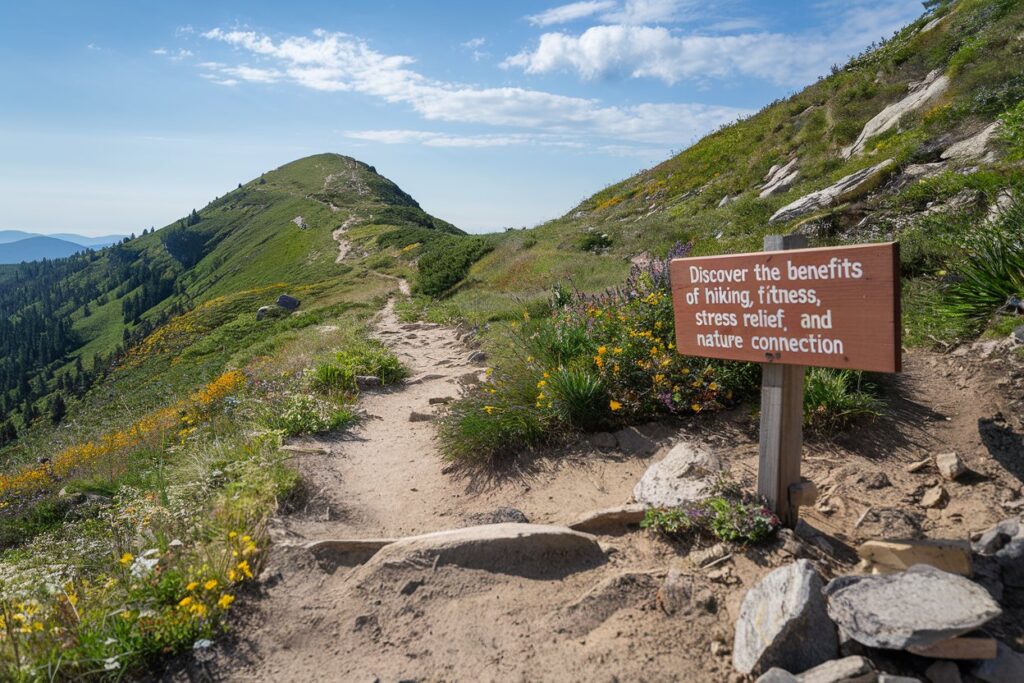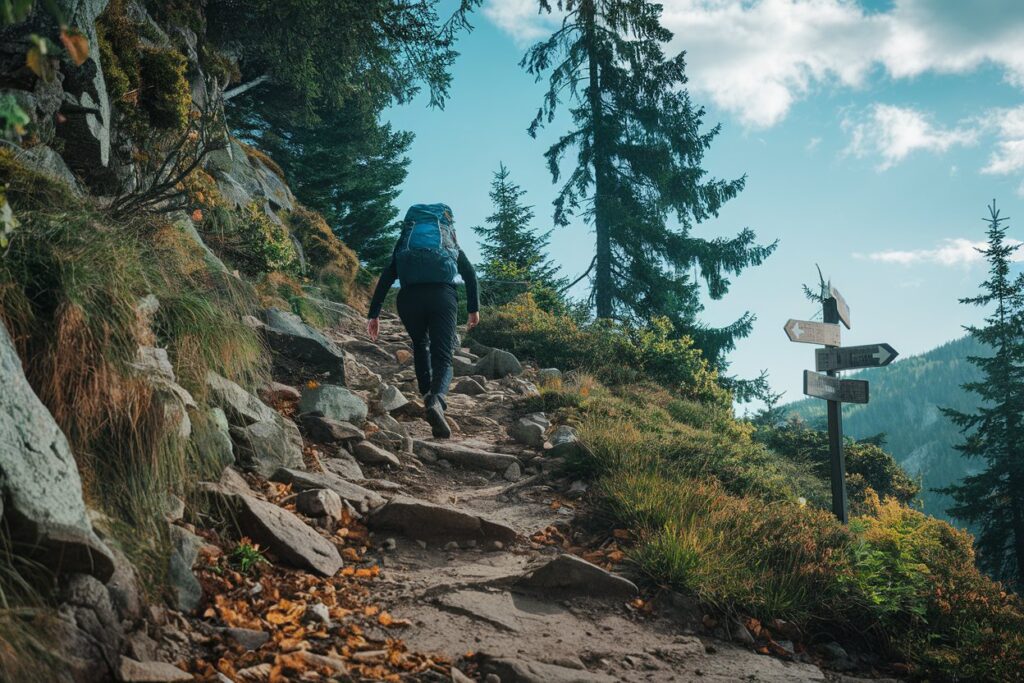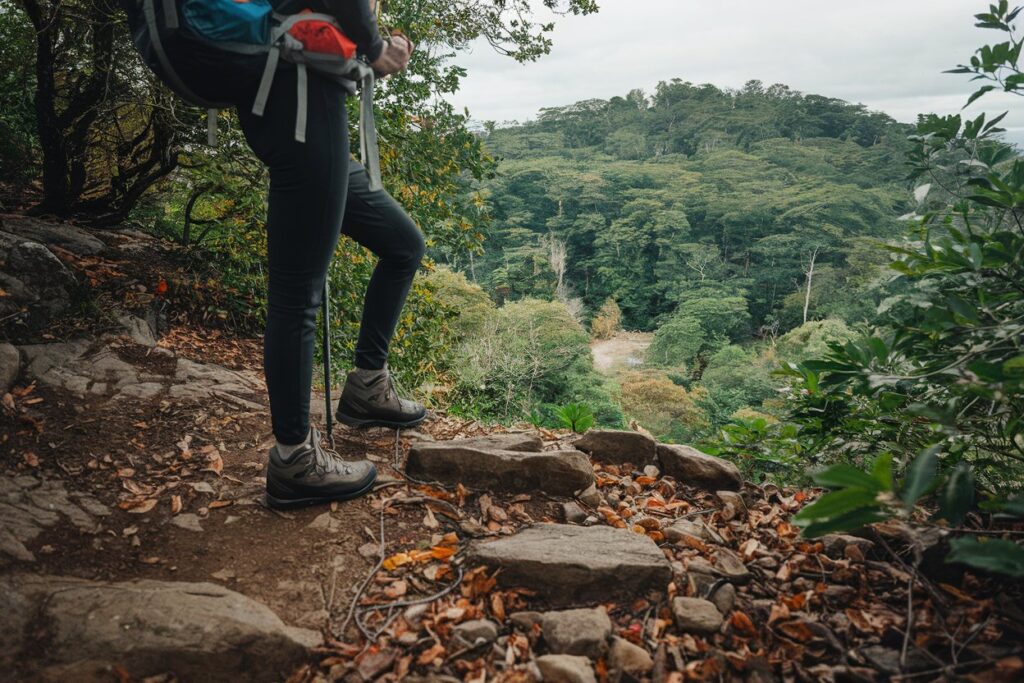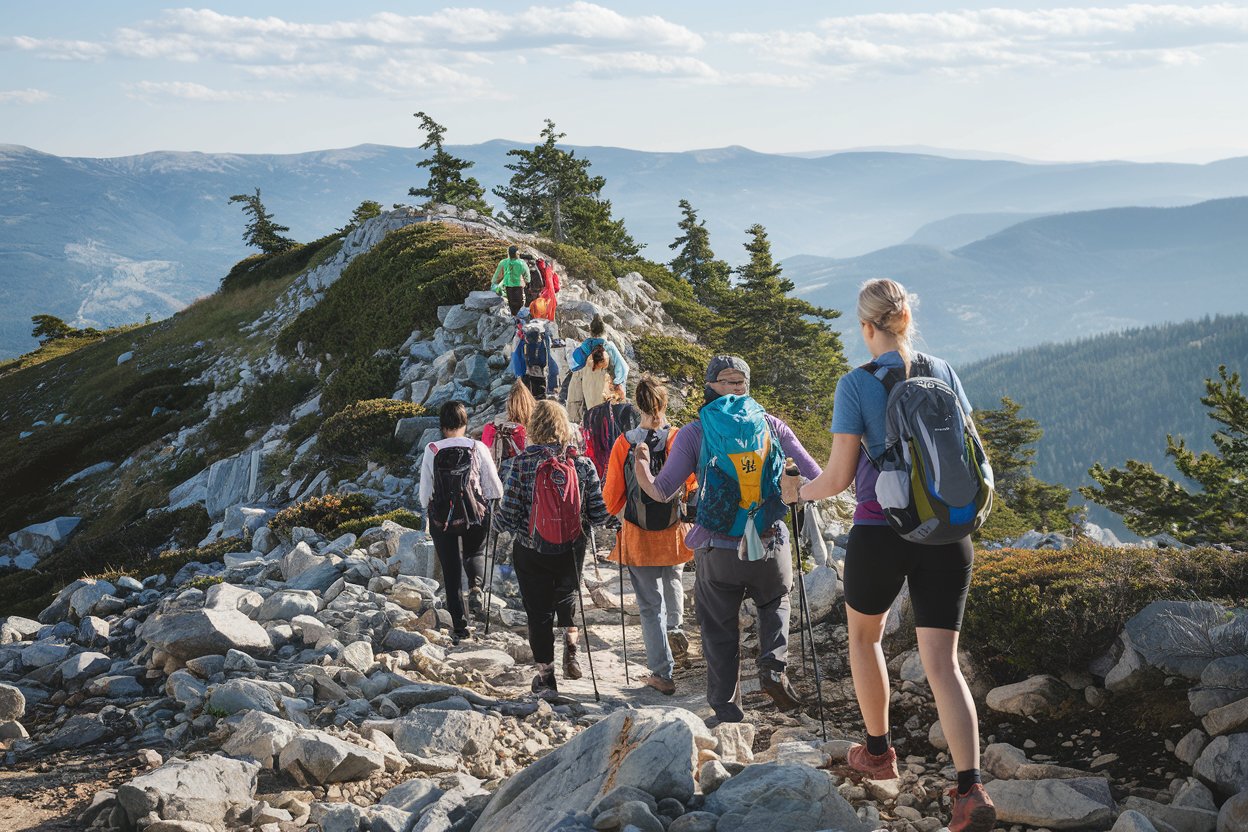Hiking is not only a great way to stay physically fit, but it also offers mental health benefits such as stress relief and a strong connection to nature. The physical exertion of hiking helps to improve cardiovascular health, strengthen muscles, and increase endurance. Furthermore, being surrounded by nature can reduce stress, boost mood, and improve overall well-being. The tranquility and beauty of the outdoors can provide a sense of peace and rejuvenation that is hard to find in our busy, modern lives. So lace up your hiking boots and hit the trails to experience the many benefits that hiking has to offer!
Exploring Hiking Trails: A Guide to HTML Format
When it comes to hiking trails, HTML format can serve as a handy guide for enthusiasts looking to explore the great outdoors. With HTML, you can easily organize information about different trails, including their difficulty level, length, and points of interest along the way. By using headings, lists, and images, you can create a visually appealing and informative resource for fellow hikers. Whether you’re embarking on a solo adventure or planning a group hike, HTML format can help you share valuable details about the trails you’ve explored, making it easier for others to follow in your footsteps.
Apps
There are a ton of apps out there for hiking, but my go-to is AllTrails. It’s like Yelp, but for hikes. It has just about every trail you can think of, complete with ratings on difficulty, distance, and helpful details like whether it’s good for kids or dogs. It’s the perfect tool to make sure you pick the right trail for your adventure.
Simple as that. Google helps you quickly find popular hiking trails near you. The challenge? Some of the most breathtaking paths are the hidden ones, and Google tends to highlight what’s most searched. Use it to discover well-known trails, but don’t be afraid to dig deeper if you’re looking for those secret, off-the-beaten-path adventures.
Essential Hiking Books and Maps for Outdoor Adventures
Don’t forget about books and maps! Certain hiking books are super detailed, focused on specific cities or areas, making them perfect for when you’re traveling. Maps are a must, not just for planning your route, but for emergencies if you lose cell service and find yourself off the beaten path. Having a good map in hand is always a smart move.

How Local Information Centers Can Help You Find Free Camping
Before you enter a state or national park, take a moment to stop by the visitor center. Instead of just paying the fee and rushing through, ask the staff for advice and tips. They know the park like the back of their hand and can offer insights that you might miss otherwise. It’s a great way to make the most of your visit!
How to Choose the Perfect Hike for Your Adventure
Once you’ve narrowed down your options, picking a hike that matches your ability is crucial for both safety and enjoyment. Hiking should be an experience you can handle and savor. Keep the following key factors in mind:
- Distance: Make sure the hike isn’t too far for your current fitness level.
- Duration: How long the hike will take, factoring in breaks and how much time you’re willing to spend.
- Difficulty: Check the classification in guidebooks or online to ensure it matches your skill level.
- Elevation: Higher elevations can make a hike more challenging, so take that into consideration.
- Time of year: Different seasons can drastically change the conditions of a trail, so choose wisely.
- Weather: Always check the forecast before heading out—weather can affect the trail and your safety.

Essential Hiking Gear for a Successful Outdoor Adventure
Hiking is so much more enjoyable when you have the right gear—it keeps you safe, comfortable, and ready for whatever nature throws your way.
You might not think you need much, but conditions can change quickly. In just a few hours, you could go from warmth to chill, or from sunny skies to unexpected rain. You want to be prepared for any scenario. And while getting stuck on the trail is rare, it can happen. Being prepared could make all the difference in an emergency.
Why Waterproof Gear is Essential for Hiking
No one thinks they need waterproof jackets, pants, or other layers—until they do. When the rain suddenly rolls in or the weather takes an unexpected turn, you’ll be glad you packed those lightweight, waterproof layers in your backpack. They’ll keep you dry, comfortable, and ready to continue your hike without the added worry of getting soaked. It’s always better to be prepared!
Mastering Layering for Hiking
Weather and trails can be unpredictable, so it’s smart to dress or pack for both hot and cold conditions. Look for sweat-wicking materials like Dri-FIT for your base layers—they’ll help keep you cool and dry by pulling moisture away from your skin. This way, you’re prepared for a warm, sunny day or a sudden chill without worrying about being uncomfortable.
Choosing the Right Footwear
When choosing shoes, consider the trail you’ll be on. Always wear comfortable, broken-in footwear to avoid blisters. For longer, more challenging trails, the chunkier hiking boots are a good choice, as they offer more support. But for shorter, easier hikes, a simple, lightweight hiking trainer will do the trick. They’re comfortable, flexible, and perfect for tackling less demanding terrain.
Essential Items to Pack for a Hiking Trip
Besides your layers, don’t forget the essentials that could make or break your hike. The gear you bring along plays a crucial role in your comfort, safety, and overall experience. Make sure you pack wisely and include everything you might need for the day. Here’s a checklist of must-haves for a day hike.

Choosing the Right Backpack
You’ll need a reliable place to stash all your essentials. Invest in a lightweight backpack that’s both functional and comfortable. The right-sized pack will easily hold your water, snacks, extra layers, and other travel-sized necessities. A well-designed backpack will distribute the weight evenly, so you won’t feel weighed down while you hike. Look for one with padded straps, breathable mesh back panels, and enough compartments to keep everything organized. A good pack can make all the difference in ensuring you’re prepared without being overburdened.
Water
Staying hydrated is key, so plan to carry around 32 ounces (or one liter) of water for every two hours you’re out on the trail. If you’re going for a longer hike, a water bladder is a great option. It allows you to carry more water comfortably and makes it easy to sip while on the move. Many hydration bladders are designed to fit conveniently into your backpack, making them an excellent choice for staying hydrated without the need to constantly stop and dig around for your water bottle.
Sunscreen Essentials
Protecting your skin from the sun is essential, especially when you’re spending time outdoors. Aim for an SPF of at least 30 to shield your skin from harmful UV rays. If you’re out for several hours, remember to reapply every two hours or after sweating or swimming. This simple step will help prevent sunburns and keep your skin healthy during your hike.
First Aid Must-Haves
You can never be too prepared when it comes to outdoor adventures. A mini first aid kit is a must-have for any hike. Look for one at REI or other sporting goods stores—these kits are compact yet contain everything you might need, from bandages to antiseptic wipes and pain relievers. Having it on hand can give you peace of mind and help you handle minor injuries quickly..
Phone & Charger
We can’t stress enough how important a portable phone charger is. While it’s tempting to disconnect and enjoy nature, your phone is a vital tool for safety. If you get lost, need directions, or must make an emergency call, your phone can be your lifeline. To make sure it lasts, we recommend turning off your phone when you’re not using it to conserve the battery. Having that backup charge can make all the difference when you need it most.
Snacks
Choose snacks that will fuel you and help with recovery while you’re on the trail. Opt for lean protein like beef jerky or protein bars to keep your muscles strong, a mix of complex and fast carbs like granola and fruit for energy, and healthy fats like nuts and seeds to keep you feeling full. It’s always a good idea to pack more than you think you’ll need—hiking can work up an appetite, and you never know if a trail might take longer than expected. Being prepared with extra snacks will keep you going strong no matter what.
Headlamp vs. Flashlight
If it gets dark while you’re out on the trail, a flashlight or headlamp is an absolute lifesaver. Sometimes hikes take longer than we think, or we push a little further to catch that perfect view at the top. It always feels like a good idea in the moment, but darkness creeps up quickly. What do you do then? Trust us, a small light is easy to pack, and it means you won’t have to worry if the sun sets faster than you expect. It’s worth the extra weight for peace of mind.
Pre-Hike Checklist and Preparation
Once you’re all set, there are a few final checks before you hit the trail. Make sure you’ve double-checked your gear, ensuring everything is packed and in good condition. Have a quick look at the weather forecast one more time to ensure you’re prepared for any changes. Confirm your route and share it with someone, especially if you’re hiking alone. Lastly, make sure your phone is fully charged, your snacks are packed, and you’re mentally prepared for the adventure ahead. With these last-minute checks, you’re ready to enjoy a safe and amazing hike!
Finding a Hiking Partner
If you’re new to hiking, having a friend with you can ease the nerves and make the experience a lot more enjoyable. Hiking with a buddy not only takes the pressure of going solo off your shoulders, but it also creates great memories to share. You can help each other navigate, keep each other motivated, and celebrate the small victories along the way. Plus, the outdoors is always more fun when you have someone to enjoy it with!
Inform Someone Before Hiking
Just like you would for a vacation, it’s important to let someone know where you’re heading and how long you plan to be out on the trail. Whether it’s a neighbor, a family member, or a close friend, make sure someone knows your hiking plans. This way, if something unexpected happens and you don’t check in when you said you would, they can step in to help. It’s a simple but crucial step to ensure safety on your adventure.
Essential Hiking Etiquette Tips
Finally, always remember to follow proper hiking etiquette while out on the trail. Respecting other hikers and the environment will enhance everyone’s experience:
- On narrow trails, hikers going uphill have the right of way.
- Use headphones, and keep your music to yourself—nature’s sounds are part of the experience.
- Stick to the trail to prevent erosion and protect natural habitats.
- Don’t disrupt wildlife or feed animals—observe them from a distance.
- Leave no trace—pack out everything you bring in.
And most importantly, just get outside! It might seem like a lot to think about at first, but once you’ve tackled a couple of hikes, you’ll feel like a pro.

Conclusion:
Hiking offers more than just a scenic escape—it’s a powerful way to boost fitness, reduce stress, and deepen your connection with nature. Whether you’re tackling challenging trails or enjoying a leisurely walk through the woods, the benefits of hiking extend to both body and mind. With every step, you strengthen your health, clear your thoughts, and gain a renewed appreciation for the world around you. So lace up your boots, hit the trail, and experience the incredible rewards that hiking has to offer!
Discover the Benefits of Hiking: Fitness, Stress Relief, and Nature Connection
1. What are the physical fitness benefits of hiking?
Hiking is a great way to improve cardiovascular health, strengthen muscles, and boost endurance.
2. How does hiking help in reducing stress?
Hiking in nature can lower cortisol levels, reduce anxiety, and improve overall mood.
3. What are some tips for beginners who want to start hiking?
Start with short and easy trails, wear appropriate footwear, stay hydrated, and pack essentials like snacks and first aid kit.
4. How can hiking improve mental well-being?
Hiking can increase mindfulness, reduce symptoms of depression, and enhance cognitive function.
5. What are some safety considerations when hiking?
Check the weather forecast, inform someone about your hiking plans, stay on marked trails, and be aware of wildlife.

